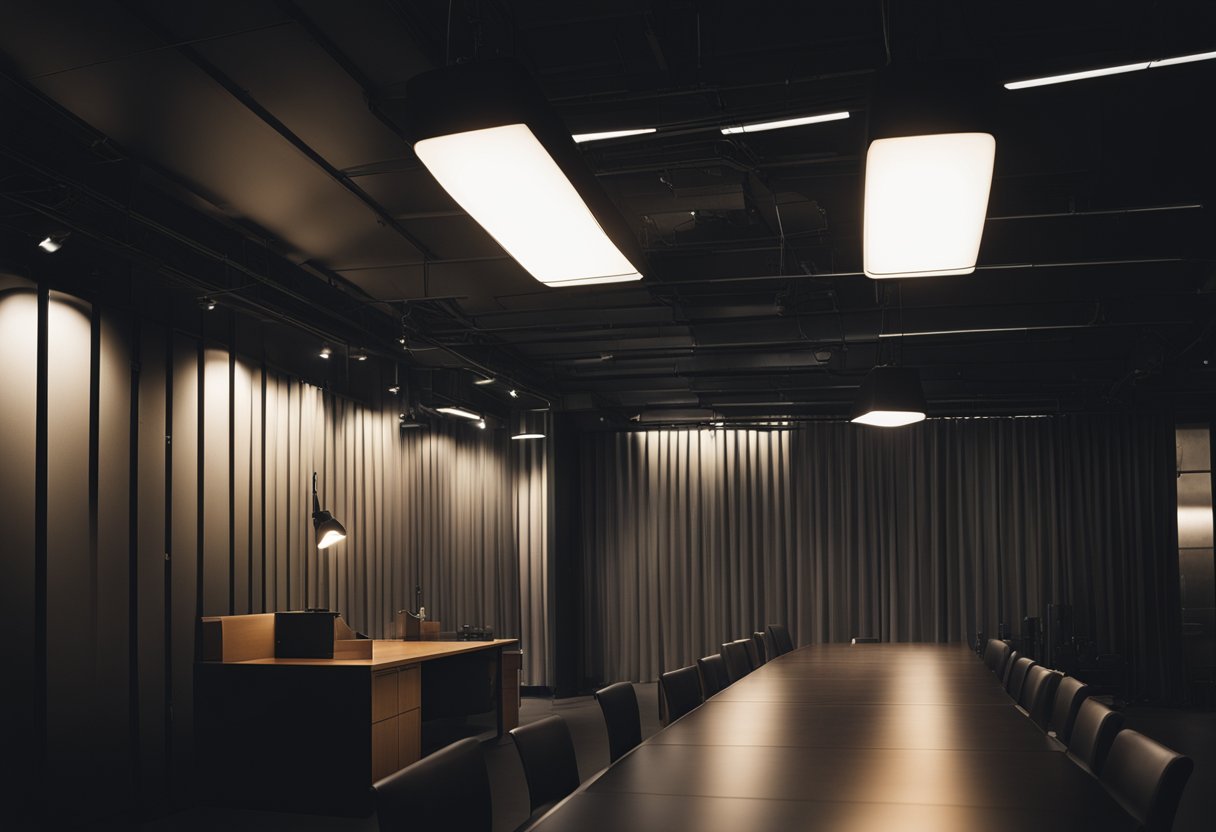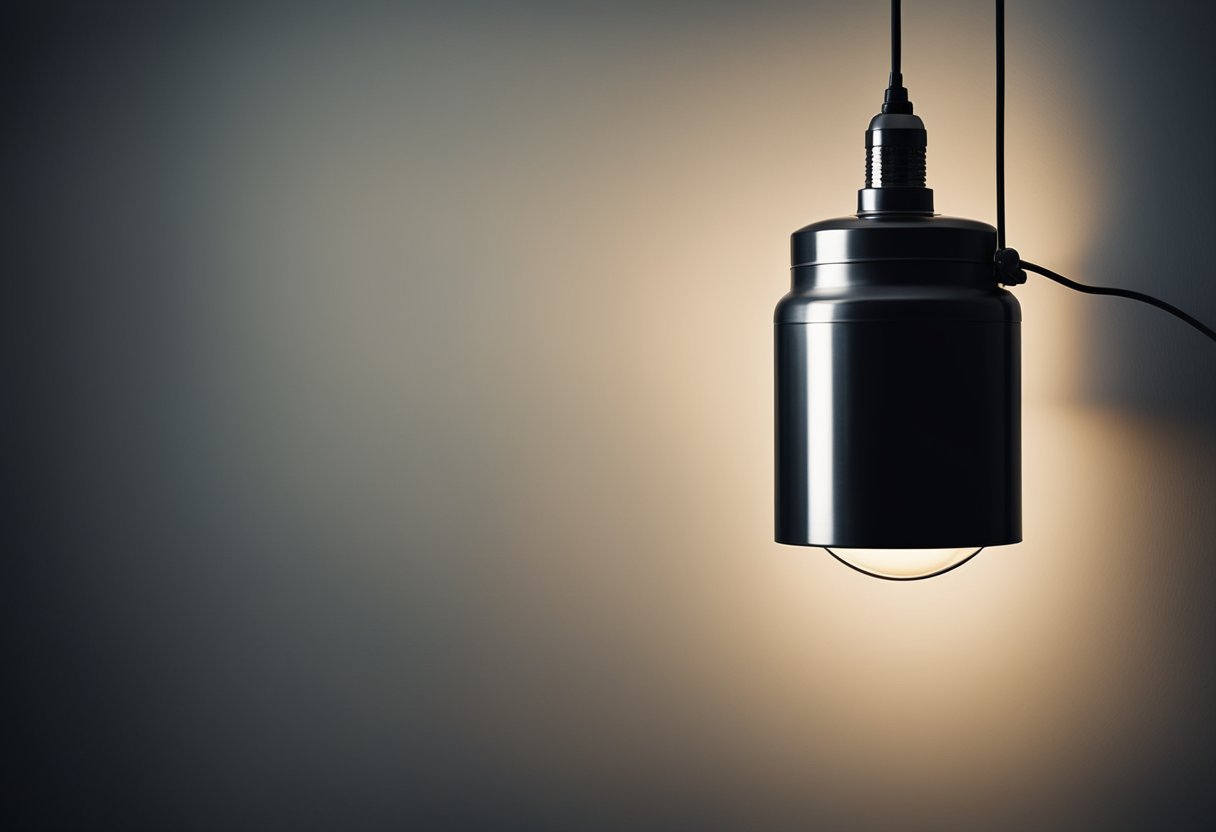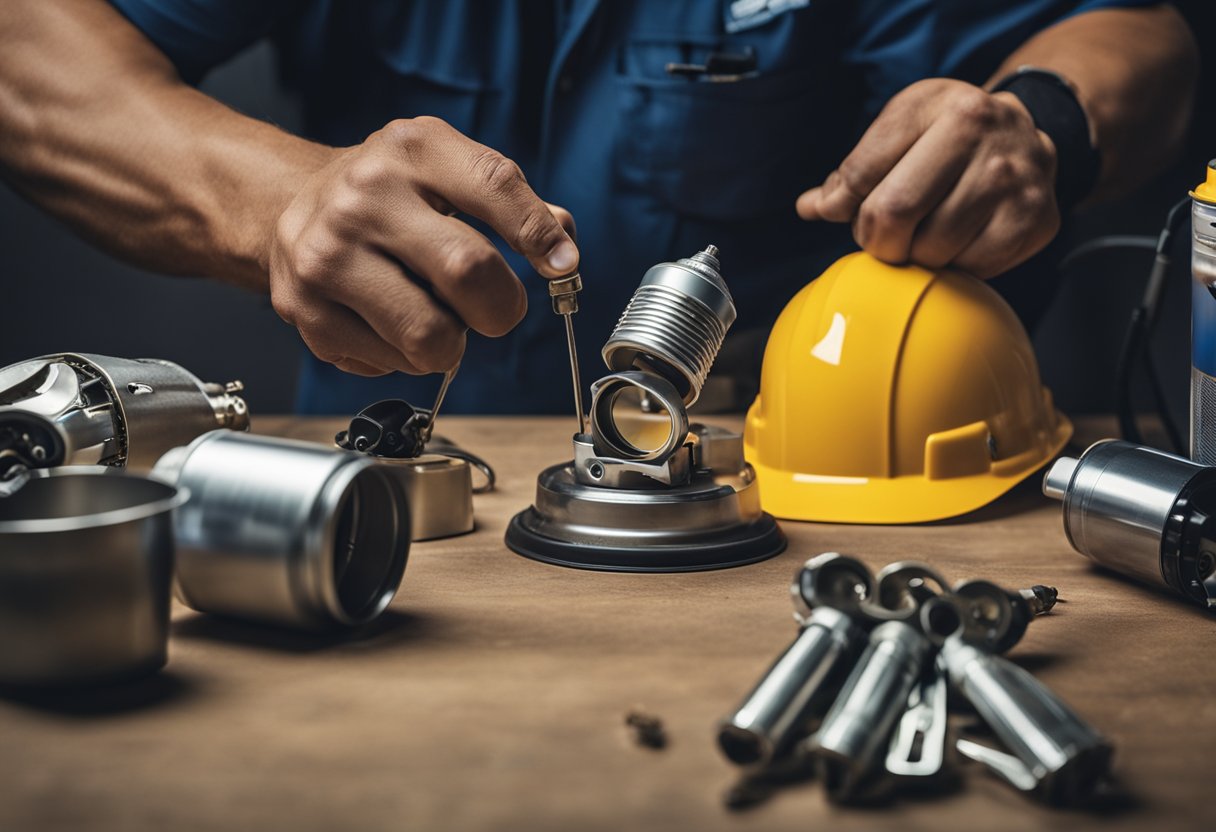I have encountered numerous instances where a can light in my home has stopped working. It can be frustrating to deal with, especially when you’re not sure what the cause of the issue is. Can lights, also known as recessed lights, are a popular lighting choice for many homes due to their sleek design and ability to provide a lot of light without taking up much space. However, when they stop working, it can be difficult to troubleshoot the issue.
Understanding the problem is the first step in fixing a can light that isn’t working. There are many reasons why a can light might fail, including a blown bulb, a bad connection, or a faulty switch. Identifying the cause of the problem can help you determine the best course of action to take in order to fix it. In this article, we’ll explore some common causes of can light failure and provide some troubleshooting tips to help you get your lights working again.
Key Takeaways
- Can lights, also known as recessed lights, are a popular lighting choice for many homes.
- There are many reasons why a can light might fail, including a blown bulb, a bad connection, or a faulty switch.
- Identifying the cause of the problem is the first step in fixing a can light that isn’t working.
Understanding the Problem
https://www.youtube.com/watch?v=n9EJHbAQujE&embed=true
As a homeowner, I understand how frustrating it can be when a can light is not working. It can be especially frustrating if you have multiple can lights and they all seem to have the same problem. Don’t worry, I’m here to help you understand the problem and find a solution.
The first step in understanding the problem is to identify the type of light fixture you have. If you have recessed lights, the problem could be with the light fixture itself or with the light switch that controls it. On the other hand, if you have LED lights, the problem could be with the power supply or driver.
Once you have identified the type of light fixture you have, you can start troubleshooting. One common issue with can lights is that the light switch may be faulty. If you have a wall switch that controls the light, try turning it off and on again. If that doesn’t work, you may need to replace the switch.
Another common issue with can lights is that the bulb may be burnt out or not making proper contact with the socket. Try replacing the bulb with a new one and make sure it is screwed in tightly. If the light still does not work, you may need to check the socket for any damage or corrosion.
LED lights can also stop working if the power supply or driver is faulty. Make sure the power supply is compatible with the LED light and that it is providing enough power to light up the fixture. If the power supply is working properly, the driver may need to be replaced.
In summary, understanding the problem with a can light not working requires identifying the type of light fixture you have and troubleshooting accordingly. Whether it’s a faulty switch, burnt out bulb, or faulty power supply, there are solutions to get your can light working again.
Common Causes of Can Light Failure
https://www.youtube.com/watch?v=WsGXKtUEYiE&embed=true
As an electrician, I’ve seen many cases of can lights not working. Here are some common causes of can light failure:
1. Bad Bulbs
The most common cause of can light failure is a bad bulb. If your light is not working, try replacing the bulb with a new one. Make sure to use the correct wattage for your fixture. Using the wrong wattage can cause the bulb to burn out quickly or even cause a fire hazard.
2. Loose Wires
Another common cause of can light failure is loose wires. If the wires are not properly connected, the light may flicker or not turn on at all. Check the wire connections inside the fixture and at the switch to ensure they are secure.
3. Damaged Sockets
If the bulb is good and the wires are secure, the socket may be damaged. Check the socket for any signs of burning or damage. If the socket is damaged, replace the entire light fixture.
4. Bad Circuit
If the entire light fixture is not working, it may be due to a bad circuit. Check the circuit breaker panel to see if the circuit has tripped. If the circuit has tripped, reset the breaker. If the breaker trips again, there may be a wiring problem or a bad breaker.
5. Sagging Trim
If the trim around the light fixture is sagging, this can cause lighting issues. The trim should be flush with the ceiling to ensure proper lighting. If the trim is sagging, try tightening the screws or unscrewing and re-screwing them in a different location.
By checking these common causes of can light failure, you can save time and money by avoiding unnecessary repairs.
Troubleshooting Can Light Issues
https://www.youtube.com/watch?v=RwXqgRGpN48&embed=true
As an electrician, I have come across several issues with can lights that can be frustrating for homeowners. Fortunately, most of these issues are simple to fix with basic troubleshooting techniques. In this section, I will walk you through some of the most common can light issues and how to troubleshoot them.
Light Bulbs
One of the most common issues with can lights is that they stop working altogether. The first thing to check is the light bulb. Make sure it is screwed in tightly and that it is the correct wattage for the fixture. If the bulb is loose, it may not be making proper contact with the socket, which can cause the light to flicker or not work at all. If the bulb is burned out, replace it with a new one of the same wattage.
Circuit Breaker
If the light bulb is not the issue, the next thing to check is the circuit breaker. If the circuit breaker is tripped, the light will not work. Check the breaker panel to see if any of the breakers are tripped. If so, reset the breaker and see if the light comes back on. If the breaker keeps tripping, there may be a wiring issue that needs to be addressed.
Wiring
If the circuit breaker is not the issue, the next thing to check is the wiring. Make sure the wiring is connected properly and that there are no loose connections. If the wiring is damaged or frayed, it will need to be replaced. If you are not comfortable working with wiring, it is best to call a professional electrician.
Recessed Lighting
If you have recessed lighting, there are a few additional things to check. Make sure the trim is flush with the ceiling and that it is not sagging. If the trim is sagging, it can cause lighting issues. Also, make sure the housing is properly installed and that there are no gaps between the housing and the ceiling.
Fixing a Light
If you have tried all of the above troubleshooting techniques and the light still does not work, it may be time to replace the fixture. Before doing so, make sure to turn off the power to the fixture at the circuit breaker. Once the power is off, remove the fixture and replace it with a new one. Make sure to follow the manufacturer’s instructions for installation.
Conclusion
In conclusion, troubleshooting can light issues can be frustrating, but with some basic knowledge and troubleshooting techniques, most issues can be resolved easily. Make sure to always turn off the power before working on any electrical fixtures and if you are not comfortable working with wiring, call a professional electrician.
How to Fix a Can Light
https://www.youtube.com/watch?v=zWXkuqtq5P8&embed=true
If you have a can light that is not working, there are several things you can do to fix it. Here are some steps you can take to troubleshoot and repair your can light:
-
Check the light bulb: The first thing you should do is check the light bulb. Make sure it is screwed in tightly and that it is the correct wattage for your fixture. If the bulb is burnt out or damaged, replace it with a new one.
-
Check the socket: If the light bulb is not the problem, check the socket. Make sure it is clean and free of debris. If the socket is damaged or corroded, you may need to replace it.
-
Check the wiring: If the light bulb and socket are both in good condition, check the wiring. Make sure the wires are securely connected and that there are no loose or frayed wires. If you find any loose wires, tighten them with a screwdriver.
-
Check the circuit: If the wiring is not the problem, check the circuit. Make sure the power is turned off and check the breaker panel or fuse box to see if a fuse has blown. If a fuse has blown, replace it with a new one.
-
Check the wall switch: If the circuit is not the problem, check the wall switch. Make sure it is turned on and functioning properly. If the switch is faulty, you may need to replace it.
-
Check the entire light fixture: If none of these steps fix the problem, you may need to check the entire light fixture. Make sure it is securely mounted and flush with the ceiling. Check for any loose screws or other issues that may be preventing it from working properly.
If you are not comfortable working with electrical appliances or wiring, it is always best to call a licensed electrician to fix the problem. They have the expertise and tools needed to safely and effectively diagnose and repair any issues with your can light.
When to Call an Electrician
As a homeowner, it’s important to know when to call an electrician. While some electrical problems can be easily fixed, others require the expertise of a licensed electrician. Attempting to fix electrical problems yourself can be dangerous and could even lead to damage to your home or a fire hazard.
Here are some signs that it’s time to call an electrician:
-
The can light is not working: If your can light is not working, it could be due to a variety of issues such as a burned-out bulb, a voltage problem, or a limit switch issue. While changing a light bulb is a simple task, if the problem persists, it’s best to call an electrician to diagnose and fix the issue.
-
Burning smell: If you smell something burning, it could be due to a wiring problem or a damaged fixture. Burning smells should never be ignored, as they can be a sign of a serious electrical problem. Call an electrician immediately if you notice any burning smells in your home.
-
Sagging or damaged wiring: If you notice any sagging or damaged wiring, it’s important to call an electrician right away. Damaged wiring can be a fire hazard and should be addressed as soon as possible.
-
Continuity test: A continuity test is used to check if a circuit is complete. If you’re experiencing electrical problems, an electrician may perform a continuity test to diagnose the issue.
-
Faulty limit switches: If you have a limit switch issue, it could be due to a faulty limit switch. A licensed electrician can diagnose and replace any faulty limit switches.
Remember, electrical problems can be dangerous and should always be taken seriously. If you’re experiencing any electrical issues in your home, don’t hesitate to call an electrician.
Preventing Future Can Light Problems
As a professional electrician, I have seen many cases where a can light stops working due to various issues. However, there are a few things you can do to prevent future problems with your can lights.
Firstly, make sure that you are using the correct wattage for your light bulbs. Using bulbs with a wattage that is too high can cause the fixture to overheat and burn out. On the other hand, using bulbs with a wattage that is too low can cause the light to flicker or not turn on at all. Check the fixture’s label to determine the correct wattage to use.
Secondly, ensure that the light bulb is properly seated in the socket tab. If the bulb is not seated correctly, it can cause the light to flicker or not turn on at all. Additionally, make sure that the socket tab is not damaged or corroded, as this can also cause problems.
Thirdly, check the wire connections to ensure that they are tight and secure. Loose wire connections can cause the light to flicker or not turn on at all. Use a continuity test to check for any wiring problems.
Fourthly, make sure that the insulation around the fixture is not blocking the airflow. Overheating can cause the fixture to burn out, so it is important to ensure that the fixture is not covered by any insulation.
Lastly, if you are unsure about how to fix a light fixture, it is always best to call a professional electrician. Attempting to fix the fixture yourself can be dangerous and can cause further damage to the fixture or even electrical appliances.
By following these simple steps, you can prevent future can light problems and ensure that your fixtures are working properly and efficiently.
Frequently Asked Questions
https://www.youtube.com/watch?v=OkDstXeJEJs&embed=true
What causes a recessed light to stop working?
There are a few common reasons why a recessed light may stop working. One of the most common reasons is a burned-out bulb. If you replace the bulb and the light still doesn’t work, the problem may be with the socket or wiring. Other possible causes include a faulty switch, a tripped circuit breaker, or a loose connection.
How do you troubleshoot a can light that is not working?
If your can light is not working, the first thing you should do is check the bulb. If the bulb is not the problem, check the switch and the circuit breaker to make sure they are working properly. If the switch and circuit breaker are fine, the problem may be with the wiring or the socket. In this case, it’s best to call a professional electrician to troubleshoot and fix the problem.
What are the common reasons for a sagging recessed light?
A sagging recessed light is usually caused by a loose or damaged mounting bracket. Over time, the bracket can become loose due to vibrations or other factors. This can cause the light to sag or even fall out of the ceiling. To fix this problem, you will need to replace the mounting bracket.
How do you replace a recessed light socket?
To replace a recessed light socket, you will need to turn off the power to the light and remove the bulb. Next, remove the trim and the housing from the ceiling. You should be able to access the socket at this point. Disconnect the wires from the old socket and connect them to the new socket. Finally, reassemble the light and turn the power back on.
What is causing my recessed light to overheat?
Overheating can be caused by a few different factors. One common cause is the use of a bulb with a wattage that is too high for the fixture. Another possible cause is a lack of ventilation around the fixture. If the fixture is covered by insulation or other materials, it may not be able to dissipate heat properly. Overheating can also be caused by a faulty transformer or ballast.
How do you fix a blown socket in a can light?
If the socket in your can light has blown, you will need to replace it. To do this, turn off the power to the light and remove the bulb. Next, remove the trim and the housing from the ceiling. You should be able to access the socket at this point. Disconnect the wires from the old socket and connect them to the new socket. Finally, reassemble the light and turn the power back on.

Hi, I’m Sal Muller of Tooltrip.com. My DIY experience led me to understand essential power tools for home projects. Tooltrip.com guides enthusiasts and professionals in choosing right tools for any job. I provide concise top tool reviews for easier, efficient DIY.




